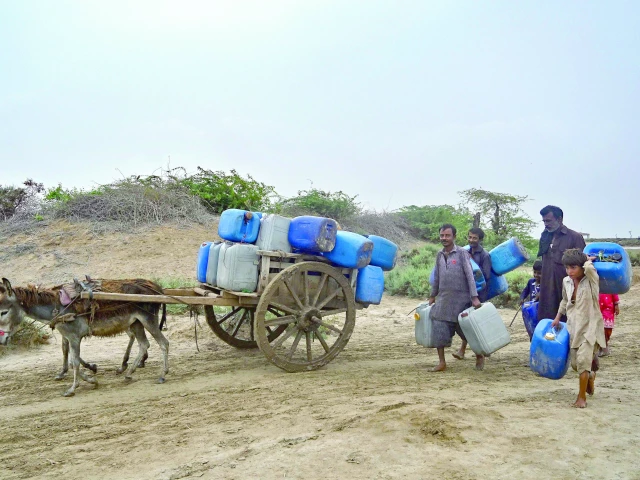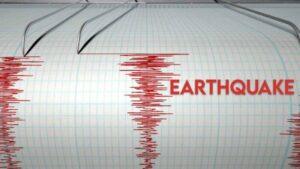Kharo Chan:
The scabs of salt creak under his feet while Habibullah Khatti walks towards his mother’s tomb to say goodbye before his people from Isla dry in the Indo Delta of the Indus of Pakistan’s Indo.
The intrusion of seawater in the Delta, where the Indo River meets the Arabic Sea in the south of the country, has caused the collapse of agricultural and fishing communities.
“Salina water has surrounded us from four sides,” Khatti told AFP from Abdullah Mirbahar village in the city of Kharo Chan, about 15 kilometers (9 miles) where the river empties in the sea.
When fish stock fell, the 54 -year -old man turned to tailoring until that also became impossible with only four of the remaining 150 homes.
“At night, a spooky silence takes over the area,” he said, while street dogs wandered through the houses of wood and deserted bamboo.
Kharo Chan once understood about 40 villages, but most have disappeared under the increase in sea water.
The population of the city fell from 26,000 in 1981 to 11,000 in 2023, according to census data.
Khatti is preparing to transfer her family to the nearby Karachi, the largest city in Pakistan and swelling with economic migrants, even from the Indo Delta.
The Fisherfolk forum of Pakistan, which advocates the fishing communities, estimates that tens of thousands of people have been displaced from Delta’s coastal districts.
However, more than 1.2 million people have been displaced from the general region of the Delta del Indo in the last two decades, according to a study published in March by the Jinnah Institute, a group of experts led by a former climate change minister.
The water flow down the delta has decreased by 80 percent since the 1950s as a result of irrigation channels, hydroelectric dams and the impacts of climate change in the glacial and snow melting, according to a 2018 study conducted by the Center for Advanced Studies of the United States of Pakistan in water.
That has led a devastating seawater intrusion.
Water salinity has increased by around 70 percent since 1990, which makes it impossible to grow crops and severely affecting shrimp and crabs populations.
“The Delta is sinking and reducing,” said Muhammad Ali Anjum, a local WWF conservationist.
Starting in the Tibet, the Indo River flows through the disputed Kashmir before crossing the entire length of Pakistan.
The river and its tributaries will water around 80 percent of the country’s cultivation lands, supporting millions of livelihoods.
The Delta, formed by rich sediments deposited by the river when it meets the sea, was once ideal for agriculture, fishing, mangroves and wildlife.
But more than 16 percent of fertile lands have become unproductive due to seawater invasion, according to a study by the government agency of the Government in 2019.
In the city of Keti Bandar, which extends inland from the edge of the water, a white layer of salt crystals covers the ground.
The ships carry drinking water from miles away and the villagers take it home through donkeys.
“Who leaves your homeland voluntarily?” Haji Karam Jat said, whose house was swallowed by the water level elevator.
He rebuilt more inland, anticipating that more families would join him.
“One person only leaves his homeland when he has no choice,” he told AFP.
The British colonial rulers were the first to alter the indoor river course with channels and dams, followed more recently by dozens of hydroelectric projects.




